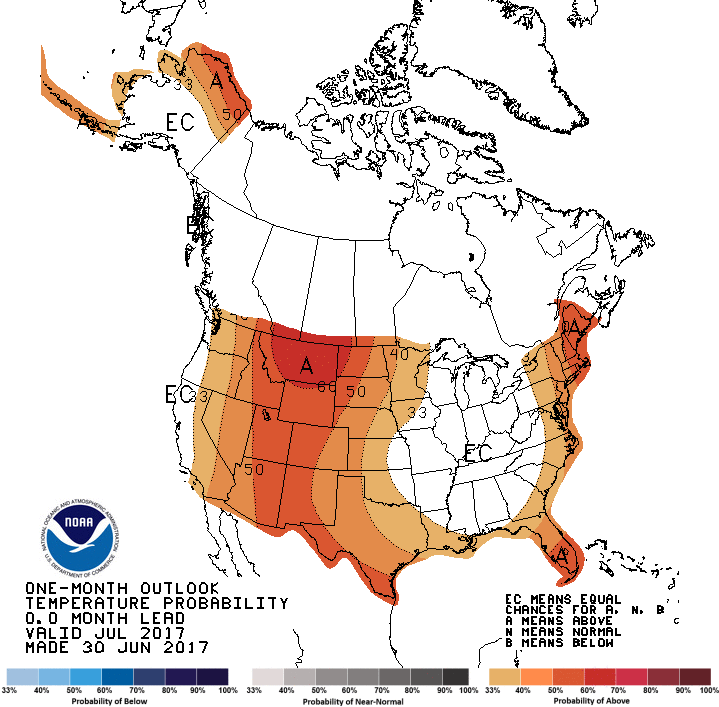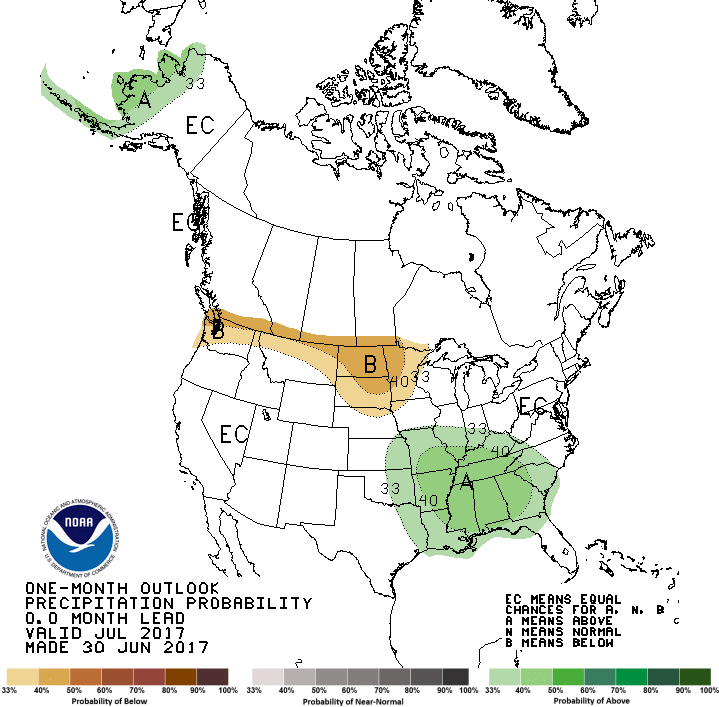Only 10 percent of the corn in the 18 states USDA reports was silking as of July 2, three percentage points behind average. Iowa and South Dakota are reported at zero, compared with an average of 6 and 2 percent, respectively. Kansas is reported at 19 percent, seven points behind its average. Nebraska, at 8 percent, is only one point off its average.
Crop condition improved one point in the excellent category, putting good/excellent at 69 percent. Condition held steady on the bottom end -- 8 percent in poor/very poor condition.
Ninety-eight percent of the soybeans have emerged and the western Corn Belt is on or ahead of average. In the 18 states, blooming stands at 18 percent, one point ahead of average. Nebraska is well ahead of average at 28 percent compared with 19 percent and Kansas is four points ahead of average at 12 percent. However, Iowa reports 12 percent and South Dakota 15 percent, both three points behind average.
Beans rated in good condition slipped two points to 54 percent, while excellent held steady at 10. On the lower end, 7 percent of beans fell into the poor category, an increase of one point, and 2 percent were classified as very poor, the same as in the previous week.
Iowa soybeans are rated 72 percent good/excellent, Kansas 67 and Nebraska 70. South Dakota remains a trouble spot, with only 36 percent rated good/excellent and 23 percent poor/very poor.
Even grain sorghum in South Dakota is rated worse than the 11 reporting states. Only 11 percent of South Dakota grain sorghum is good and none fall into the excellent category. Thirty-two percent is poor/very poor. This compares with 62 percent good/very good and 3 percent poor for all states. Kansas and Nebraska have ratings of 71 percent and 68 percent good/excellent, respectively.
Wheat
Winter wheat harvest is slightly more than half complete in the 18 reported states. Kansas is one point ahead of average, at 73 percent. The 22 percent rated poor/very poor and 47 percent rated good/excellent give an indication of how much wheat was affected by late freezes and other issues. Nebraska has harvested 17 percent of its winter wheat, five points behind average. Its ratings are not much different from Kansas: 50 percent good/excellent and 15 percent poor/very poor.
Spring wheat remains the crop with the most issues. At 59 percent headed, its good/excellent ratings slipped three points from the prior week to 37 percent. The poor/very poor end of the scale climbed five points to 33 percent. Sixty-five percent of South Dakota’s crop falls into the low end, while only 11 percent is rated at the high end.
Weather markets
As is common at this time of year, hot weather may put early-planted corn at risk as it enters pollination. That’s especially true in the western Corn Belt and northern Plains, where the outlook through the end of next week calls for hot and dry conditions.
Markets are responding with a growing season rally, carrying December corn futures to more than $4. Elevators report producers responded with old-crop sales but not so much in the new crop.
Spring wheat continues to be the source of fireworks for traders eyeing the impact of lower acreage in both the United States and Canada and dry weather. Contract highs have been hit in each of the spring wheat months and in most of the hard red and soft red winter futures months.
The July Outlook from the Climate Prediction Center suggests additional hot, dry conditions, which could continue to support spring wheat prices as harvest approaches.
Note, however, the central part of the Midwest has equal chances of above or below normal temperatures and odds favor wetter than normal conditions in the southern portion of the Midwest.


Maps source: http://www.cpc.ncep.noaa.gov/products/predictions/30day/

